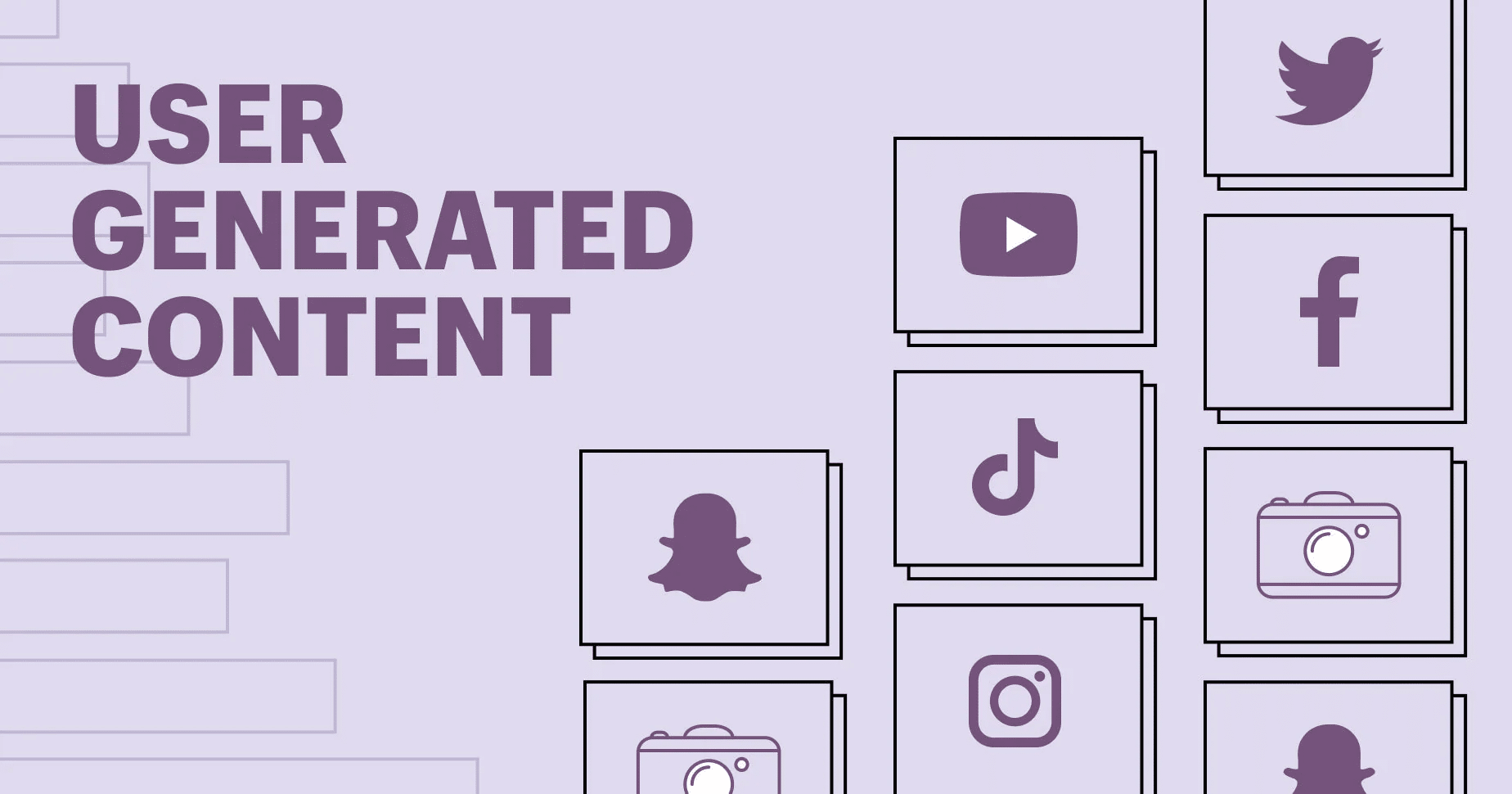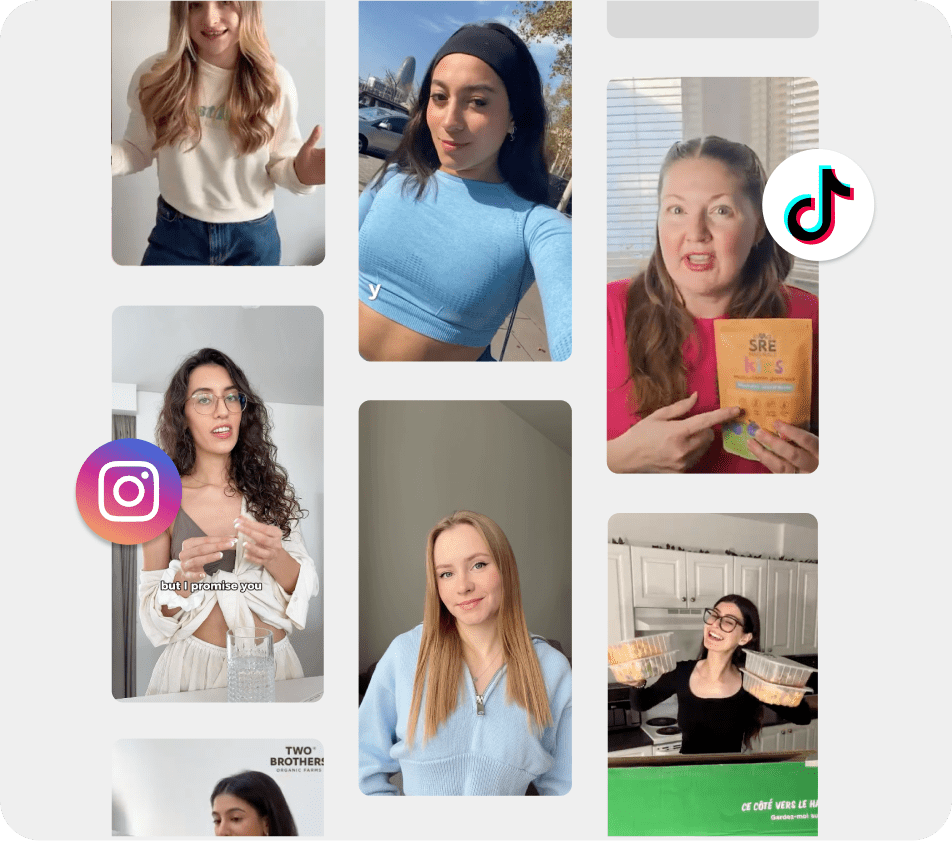Scroll through your social media feed right now. What catches your eye? Is it the perfectly polished ad or the friend posting a hilarious (and relatable) video using a new product? Chances are, it’s the authenticity and real-life experience that resonates. That’s the magic of UGC Marketing, folks!
Today’s consumers crave genuineness. User-generated content (UGC)—photos, videos, and reviews created by real people, your actual customers—is the new marketing goldmine.
Why? Because it feels authentic, relatable, and trustworthy. You’d rather hear about a product from a friend who loves it than a paid spokesperson, right?
What is UGC Marketing?
UGC Marketing stands for User-Generated Content Marketing. It’s a powerful strategy that promotes your brand by using content created by real people, your everyday customers.
This content can take many forms:
- Eye-catching Images & Videos: Think of stunning product photos on Instagram or customers showcasing your product in action through engaging UGC videos.
- In-Depth Reviews: Detailed written reviews on your website or product platforms offer valuable insights and build trust for potential buyers.
- Social Media Buzz: Mentions, positive comments, and user-generated hashtags on platforms like Twitter or Facebook create organic brand awareness and reach a wider audience.
These various UGC formats offer a unique advantage – authenticity. They showcase real customer experiences, fostering trust and connection with potential buyers who can relate to the content.
Here are some key benefits of embracing UGC Marketing:
- Building Trust: People trust the voice of experience more than traditional marketing messages. Visual UGC feels genuine and relatable, making consumers more receptive to your brand.
- Enhanced Brand Image: A steady stream of positive UGC paints a glowing picture of your brand. It showcases customer satisfaction and positions your company in a favorable light, attracting new customers and boosting loyalty.
- Cost-Effective Marketing: UGC Marketing leverages content created by your customers, reducing your marketing budget compared to traditional advertising campaigns.
By strategically incorporating UGC, you empower your customers to become brand advocates. They create content that resonates with their peers, ultimately driving brand awareness, building trust, and propelling your marketing efforts forward.
UGC vs. Affiliate Marketing
UGC Marketing might seem like the new kid on the block, but another player in the marketing world is Affiliate Marketing.
Let’s break down the key differences and see how they can work together:
- Affiliate Marketing: This strategy involves partnering with established UGC content creators (affiliates) who promote your products on their platforms (blogs, social media) in exchange for commissions on sales generated through their unique referral links.
- The Key Difference: The core distinction between UGC Marketing and Affiliate Marketing lies in the incentive for content creation. UGC Marketing thrives on everyday users creating organic content driven by their genuine love for the brand. Affiliate Marketing, on the other hand, involves a clear incentive (commission) for promoting a product.
- Potential Overlaps: While the lines may seem clear-cut, there can be some overlap. UGC Marketing can identify potential affiliates. For instance, a user who consistently creates positive UGC about your brand might be a perfect candidate for an affiliate partnership.
- Complementary Strategies: Don’t consider them competitors – they can be powerful allies! UGC Marketing can provide valuable social proof and showcase real customer experiences, which targeted affiliate marketing campaigns can then amplify. Positive UGC can also build trust in affiliate promotions, leading to better UGC rates.
In summary, both UGC and Affiliate Marketing leverage the power of user-generated content, but they take different approaches.
By understanding their strengths and potential overlaps, you can create a comprehensive marketing strategy that utilizes both to achieve maximum impact.
UGC vs. Influencer Marketing
The world of online marketing is brimming with options. We’ve explored UGC and Affiliate Marketing, but another big player is Influencer Marketing.
Let’s see how they compare:
- Influencer Marketing: This strategy involves collaborating with established online personalities (influencers) who have built large followings on social media platforms. Influencers promote your products or services through sponsored posts, reviews, or collaborations, leveraging their reach to generate brand awareness and potentially drive sales.
- The Key Difference: The primary distinction lies in the type of content creator. UGC Marketing focuses on everyday users, your customers, who create content organically. Influencer Marketing, on the other hand, leverages the established audience and reach of influencers.
- Reach vs. Relatability: Influencer Marketing offers significant reach due to the influencer’s existing follower base. However, the content might feel less relatable to potential buyers than UGC, showcasing everyday people’s experiences.
- Complementary Strategies: Like affiliate marketing, UGC and influencer marketing can be powerful allies!
While the approaches differ, both UGC Marketing and Influencer Marketing leverage the power of user-generated content. By understanding their strengths and how they can work together, you can create a dynamic marketing strategy that benefits from the broad reach and relatable experiences and, ultimately, drives successful brand promotion.
| Feature | UGC Marketing | Affiliate Marketing | Influencer Marketing |
| Content Creator | Everyday users, customers | Established content creators (affiliates) | Established online personalities (influencers) |
| Content Incentive | Organic (love for the brand) | Commission-based (sales generated) | Collaboration fee, product placement, or affiliate |
| Content Examples | Images, videos, reviews, social media mentions | Blog posts, social media posts with referral links | Sponsored posts, reviews, and collaborations on social media |
| Focus | Building brand awareness, trust, and engagement | Driving sales | Driving brand awareness and sales, product promotion |
| Cost | Relatively low (leverages user-generated content) | Can be variable depending on the commission structure | It can be variable depending on the commission structure |
| Social Proof | High (authentic customer experiences) | Moderate (depends on affiliate reputation) | Moderate (depends on the influencer’s authenticity) |
| Reach | Organic reach depends on the user base | Can leverage established affiliate audience | Moderate (depends on influencer’s authenticity) |
Overlaps & Complements:
- UGC Marketing can identify potential affiliates and micro-influencers.
- UGC content can support affiliate and influencer marketing campaigns (social proof, building trust).
- Influencer marketing campaigns can benefit from showcasing real customer experiences (UGC).
All three strategies leverage the power of user-generated content, but they have different approaches and strengths. Understanding their distinctions and potential overlaps allows you to create a comprehensive marketing strategy that utilizes each method to achieve maximum impact for your brand.
Building Your UGC Marketing Powerhouse: A Step-by-Step Strategy
UGC Marketing offers a dynamic approach to brand promotion. Here’s a roadmap to craft a winning UGC Marketing strategy:
- Know Your Audience: Who are you trying to reach? Understanding your target audience’s demographics, interests, and preferred social media platforms. What type of content resonates with them? Are they drawn to visually appealing photos, informative videos, or detailed written reviews?
- Craft Compelling Campaigns: Set clear goals. What do you want to achieve with your UGC campaign? Brand awareness, increased engagement, or driving website traffic? Develop a compelling call to action (CTA). Tell your audience exactly what you want them to do, whether posting a photo with a specific hashtag or leaving a review.
- Spark User Creativity: Create branded hashtags. A catchy hashtag can encourage user participation and make discovering UGC related to your campaign easier. Host engaging contests. Offer incentives like discounts or product giveaways to encourage users to create and share UGC.
- Foster a UGC Hub: Dedicate a space on your website to showcase UGC. This could be a gallery of photos, a section featuring customer reviews, or a curated feed of social media mentions. Develop user-friendly submission guidelines. Make it easy for users to share their content, whether it’s through a dedicated website portal or a social media call to action.
- Moderate Wisely: Maintain brand voice and quality. Implement a moderation process to ensure UGC aligns with your brand image and removes inappropriate content. Be transparent. Let your audience know your moderation policy and how you handle user-generated content.
- Analyze and Adapt: Track your UGC performance. Monitor metrics like engagement, reach, and sentiment analysis to understand which content resonates and what adjustments you can make. Refine your strategy. Based on insights from your analysis, keep your campaigns fresh and adapt them to maximize the impact of your UGC Marketing efforts.
By following these steps and fostering a vibrant community around your brand, you can leverage the power of UGC Marketing to build brand awareness, cultivate trust with your customers, and ultimately achieve your marketing goals.
Conclusion
Forget celebrity endorsements – UGC Marketing is the future! This blog post unlocked its secrets, showing you how to harness the power of user-generated content.
Remember, the key lies in authenticity, trust, and connection. By implementing a strategic UGC Marketing approach, you can empower your customers to become your biggest brand advocates, driving brand awareness, boosting sales, and propelling your business forward.





